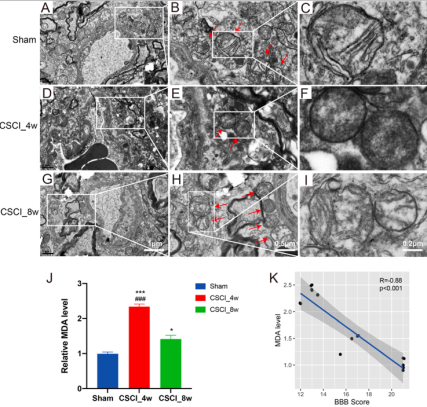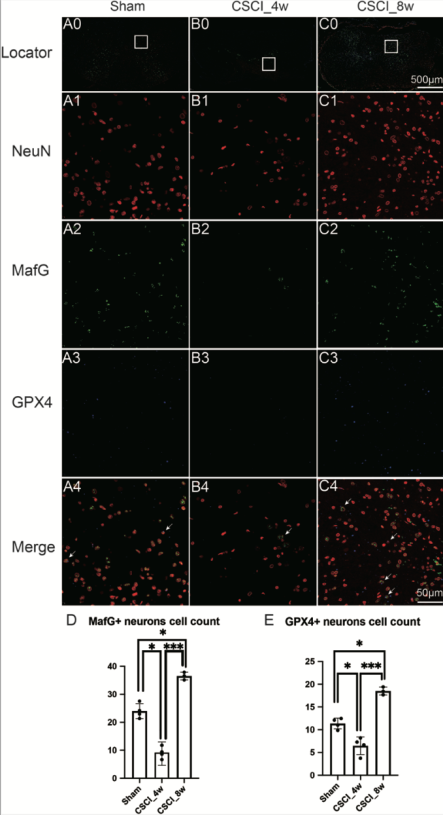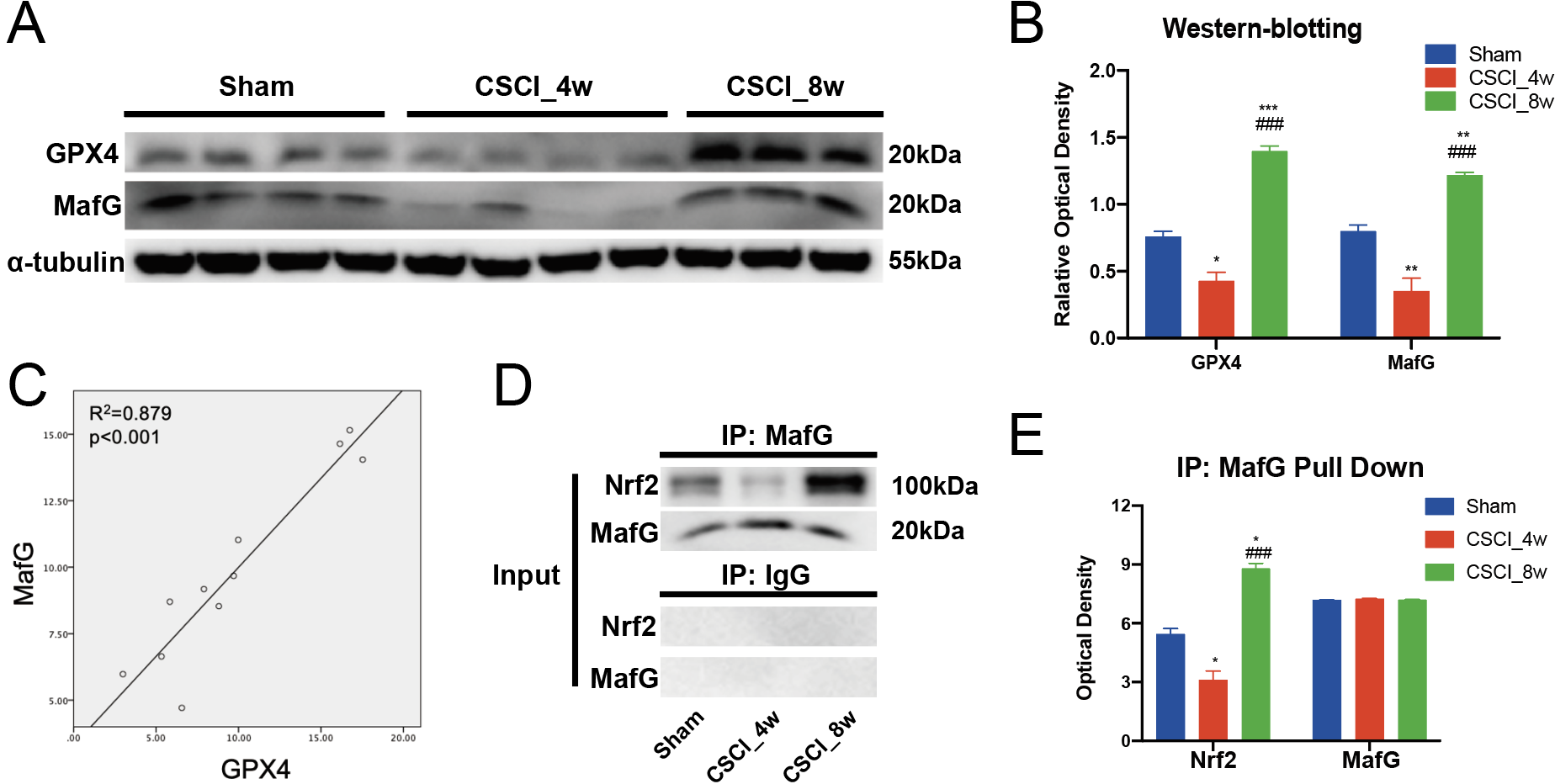中国神经再生研究(英文版) ›› 2023, Vol. 18 ›› Issue (11): 2482-2488.doi: 10.4103/1673-5374.371378
抑制铁死亡有利于慢性压迫性脊髓损伤后神经功能的恢复
The ferroptosis activity is associated with neurological recovery following chronic compressive spinal cord injury
Zhengran Yu1, #, Xing Cheng2, #, Wenxu Pan3, #, Cheng Yu4, Yang Duan4, *
- 1Department of Spine Surgery, Orthopedics Center of Guangdong Provincial People’s Hospital (Guangdong Academy of Medical Sciences), Southern Medical University, Guangzhou, Guangdong Province, China; 2Department of Spine Surgery, The First Affiliated Hospital, Sun Yat-sen University, Guangzhou, Guangdong Province, China; 3Department of Gastroenterology, Guangzhou Women and Children’s Medical Center, Jinan University, Guangzhou, Guangdong Province, China; 4Department of Spine Surgery, Zhujiang Hospital, Southern Medical University, Guangzhou, Guangdong Province, China
摘要:
脊髓型颈椎病是成人最常见的导致脊髓功能障碍的疾病之一,其病理机制在于脊髓受到椎管内骨性结构或软组织的慢性压迫。铁死亡是许多神经退行性疾病的一个重要病理过程;然而,它在慢性脊髓压迫中的作用仍不清楚。实验建立了慢性压迫性脊髓损伤大鼠模型,通过转录组测序技术发现了铁死亡相关通路在这个模型中富集。通过透射电子显微镜和丙二醛定量分析,研究证实铁死亡的活性在压迫第4周达到峰值,而在第8周时减弱,与神经功能显著负相关。qPCR、免疫荧光和免疫印迹检测发现,在脊髓压迫后第4周神经元中的抗铁死亡分子谷胱甘肽过氧化物酶4和MAF BZIP转录因子G的表达受到抑制,但在8周时增加。MAF BZIP转录因子G和Nrf2之间的相互作用在慢性脊髓压迫后第4周下调,却在第8周时被显著上调。谷胱甘肽过氧化物酶4和MAF BZIP转录因子G蛋白的表达呈正相关,与神经功能生理变化的趋势呈负相关。研究揭示了慢性脊髓压迫大鼠在伤后8周内的转录组以及铁死亡活性的变化,抑制铁死亡有利于慢性压迫性脊髓损伤后神经功能的恢复。实验结果为了解抗铁死亡疗法在治疗脊髓型颈椎病中的潜力提供了见解。
https://orcid.org/0000-0003-4809-9516 (Yang Duan)




